October 14, 2007
By Nancy Rouse-Talley
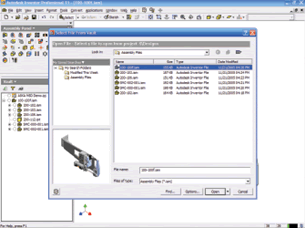 The typical CAD model, such as this Autodesk Inventor file, is a collection of individual parts. Autodesk Vault maintains version control of individual components as well as assemblies. |
Autodesk CEO Carl Bass said what was on many minds when he delivered a stinging reproach at the company’s World Press Day in February 2007 to product lifecycle management (PLM) vendors: “There are much more pragmatic, much more digestible approaches that solve the problem of how to inform design and engineering early in the process…. PLM is an artifact, a marketing slogan, to satisfy a financial community.” Yet Bass’s comments, which can be viewed in more detail on YouTube, could be regarded as carefully orchestrated marketing hype aimed at companies for whom project coordination is more effective when implemented on a broader enterprise level.
PLM companies are trying to improve customer efficiency on a wider scale, integrating product data throughout the enterprise while involving more than the
engineering and manufacturing departments. When that’s taken into account, Bass’s complaint seems to actually be zeroed in on PLM implementations since he suggests that something’s wrong with any application that generates more revenue from consulting fees than from software licenses, which is how many PLM implementations have worked.
Could Bass be correct? After all, the data management landscape is littered with corpses of spectacular and costly projects that never delivered. A prime example is Boeing’s much ballyhooed DCAC/MRM (define and control aircraft configuration/manufacturing resource management) program, launched in 1994 with the promise of reducing costs associated with building aircraft by 25 percent via streamlined design control and parts tracking.
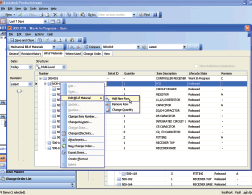 A useful feature of Autodesk Productstream is the ability to add items to the BOM that may not be in the CAD model.Users can also change attributes such as quantity, as shown above. |
The program ultimately cost Boeing upward of $1 billion, was buggy, and never produced the cost savings expected. Business Week reported in 2002 that, “An internal audit ]at Boeing] in the third quarter of 1997 revealed that estimated DCAC cost savings were being ‘arbitrarily predetermined’ to show more of a savings benefit than actually existed.”
Digital Prototyping
Autodesk took another tack. The company advocates digital prototyping as the way to move data through concept validation, modeling, design, and manufacturing. Where PLM defines data management as an enterprise solution similar to enterprise resource planning (ERP), digital prototyping focuses strictly on engineering and manufacturing.
The digital prototyping approach is now embraced by some important manufacturers who once promoted enterprise PLM, including Boeing. Its new 787 Dreamliner, like the 777 before it, was digitally designed, but the digital definition from engineering was pushed into manufacturing via new processes that replaced DCAC/MRM.
Andrew J. Anagnost, vice president of CAD and CAE at Autodesk, says that properly implemented digital prototyping can help customers manage their data. “We see customers fundamentally struggling with the steps that we used to refer to as PDM ]product data management]. Specifically, how to control access to engineering information, change and track it, and communicate it earlier and more effectively to manufacturing.”
Anagnost says that Autodesk wants to integrate data management within the context of digital prototyping. “It’s not enough to automate your drawings. You have to start digital prototyping. You have to reduce the number of prototypes and move prototype information digitally from one step of the process to the other. If you don’t start doing this, your competitors will — and your competitors are, more often than not, overseas.”
Back to the Future
If PLM is a fabrication by a few software vendors to compete for the dollars large companies such as aerospace and automotive manufacturers spend on ERP systems, then Autodesk’s approach more closely relates to the roots of engineering data management.
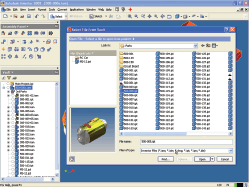 Vault understands the structure of 3D files and can manage the large numbers of file types created by a program such as Inventor. |
“We believe that the classic promise of PDM has not been fulfilled in the broader manufacturing universe. Eighty percent of our customers still manage the flow of their information with Windows file folders,” says Anagnost. “That’s just not competitive moving forward.”
Anagnost believes that customers need better answers to their data management problems. “They don’t need a PLM system, and frankly, they will probably never need a PLM system. What they need is something that is pragmatically focused on the problem that they have in front of them today. To do that they need really good product data management to control, manage, and move digital prototypes.”
Digital Data Control
Two Autodesk products support control of the information associated with digital prototyping — Autodesk Vault and Productstream. Vault is a centralized data management application that stores and manages design data, allowing users to check files in and out and save revisions. The program is bundled in all of Autodesk’s design software including Autodesk Inventor, Mechanical, Civil 3D, 3ds Max, and Electrical.
Autodesk’s flagship 2D drafting product, AutoCAD, does not ship with Vault, but customers can get a plug-in that works with it. Plug-ins for Dassualt Systemes’ SolidWorks and PTC’s Pro/Engineer are also available.
Autodesk Vault understands the structure of CAD files and manages the attributes that define the file, keeping track of versions as users work on the files. Numerous file types produced by Autodesk Inventor are handled by the program, including part, assembly, drawing, and exploded assembly file. Vault can also store so-called lightweight versions of files to share with users who do not need access to CAD geometry and attributes. Plus, users can copy components or complete designs from Vault into new documents.
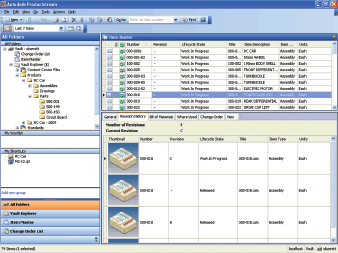 Productstream keeps track of the revisions made to individual components and assemblies and Productstream keeps track of the revisions made to individual components and assemblies andpresents version histories graphically.Designs will not be released before they are finalized. |
Productstream works in conjunction with Vault. “Productstream is all about moving the digital prototype through the steps in the process and controlling the changes,“ says Anagnost. “It’s classic PDM, but we’ve spent a lot of time on the things that made it difficult to control data. We’ve made it easy and cost-effective, and we’ve integrated it with the CAD application so that engineers can use it to solve the problems they are struggling with right now.”
Productstream automates the engineering-change release process as well as bill-of-material (BOM) management. BOM items can be created, edited, and defined in the program. In addition, the software allows users to compare two BOMs and view their revision histories. What’s more, the program offers bidirectional mapping of properties between CAD files and BOM items. Ultimately, customers can push data from Productstream to their ERP system.
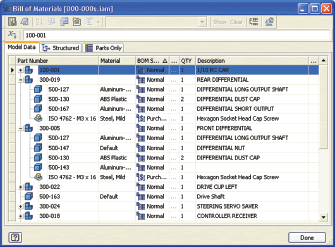 Vault presents both flat and hierarchical views of the bill of material.Data such as part number, material, quantity, and item description are included in the Bill of Materials. |
Forms associated with engineering change orders (ECO) can be customized in Productstream. The program allows automatic routing of engineering changes to various members of the design team simultaneously; e-mails are automatically generated to alert downstream users when changes are made and new items are released.
In addition, the lifecycle state (e.g., released, in process, or approved) of a component or other item can be specified, which guarantees that designs will not be released before they are finalized. Productstream now keeps track of the lifecycle state of BOMs and ECOs, and Autodesk plans to enhance the program to handle the lifecycles of other types of documents as well.
More Information:
Autodesk, Inc.
San Rafael, CA
autodesk.com
Contributing Editor Nancy Rouse-Talley writes on technology subjects, including product lifecycle management, computer-aided design, and engineering. You can send Rouse-Talley your thoughts on this article c/o DE-Editorsmailto:[email protected].
Subscribe to our FREE magazine, FREE email newsletters or both!
About the Author
DE’s editors contribute news and new product announcements to Digital Engineering.
Press releases may be sent to them via [email protected].






